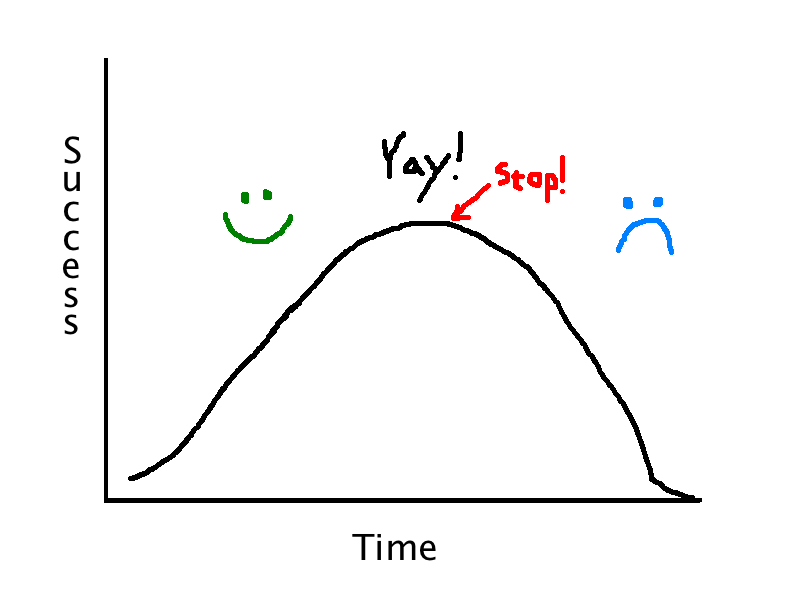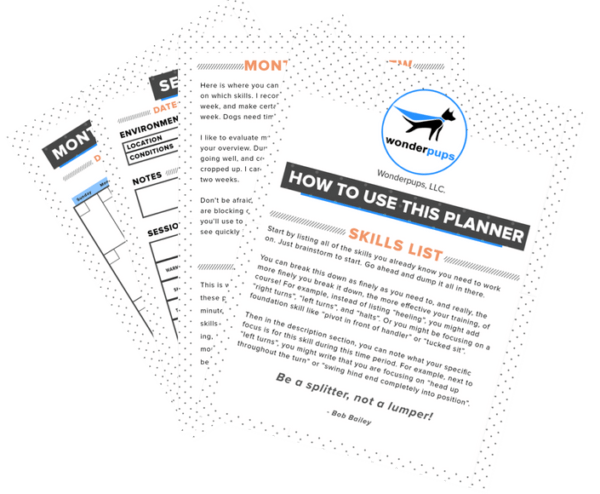You’ve seen it before. You started the session as planned. At first the dog is a little rusty, takes a few reps to get in the groove. Then you find that sweet spot. He hits the target 5, 6, 7 times in a row. Maybe even 10 or 20 times. Then all of a sudden, you cue the target and the dog throws a down.
What on earth? “You were just paid 10 times in a row for the same behavior, what on earth makes you think it’s suddenly now a down?”
What’s going on with this?
What you are experiencing is the downslope of your training session curve.
In watching hundreds of dogs training sessions over the last couple of years, I have noticed a very clear pattern. Most training sessions follow that ubiquitous bell curve shape, like everything biological. So at the beginning of the training session, you are warming up, making progress, then the dog settles in and starts being right several times in a row. That’s your peak. Then the success rate starts to drop as you head down the other side of the curve. That subtle change can be hard to notice in the moment. But one clear sign, is that the dog, who has been reinforced 10 times in a row for exactly the right behavior, suddenly offers something totally different. I’ve seen that over and over and over. The dog has been sending to a target, looks great 5-6 times in a row, and then suddenly offers a down. Or a sit. That’s a big flashing light that we’ve headed down the far side of the progress curve.

Why is this a problem?
At best, I’m just wasting everyone’s time. Mine, the dog’s, maybe even my instructor’s. Additionally, aggregated over months and months, this repetition of less than stellar performance ingrains that not ideal neurological pattern. We are no longer practicing using the ideal muscles for this action. Other accessory muscles take over and compensate. Not what we want for high level performance!
At worst, I’m setting my dog up for physical or emotional injury. A tired dog is less resilient to stress, and more likely to make a physical mistake and hurt himself. He’s more likely to associate training that behavior with unpleasant feelings, resulting in festering, poisoned cues that can erode the performance.
I want to engrave a habit of finishing strong. So that means recognizing when we’ve made progress in a behavior, and immediately moving on to something else. In fact, after making a bit of progress, that’s a great point to take a play break… pairing success with FUN!
Stay in the zone. Make your last rep, your best rep.
